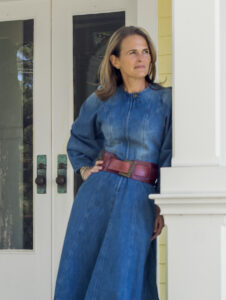You never know what you’ll find behind wall paneling, under carpets, or in the basement after a hard rain. I always encourage owners to take their time in the planning stages and try to anticipate as many decisions as possible because, lord knows, old-house rehab projects are a roller coaster ride once they get started.
More and more, the question I hear with the most trepidation from homeowners is, “Who can do this work?” Where are all the carpenters who can restore and replicate historic millwork, the plumbers and electricians who won’t insist on ripping through your original tile, the plasterers, the stone masons, the window wizards?
Let me assure you, these people do exist, and they are wonderful. The broad term for them is “Preservation Trades”, which a recent study published by the University of New Hampshire defines as people who have “training and knowledge specific to the maintenance, restoration, and rehabilitation of historic buildings, places, and objects (i.e. at least 50 years old).”
But there is a genuine shortage of these trades. A big reason is a good one – the interest in fixing up old houses that increasingly outstrips the supply of skilled labor. Another critical factor – more concerning – is the retirement of existing tradespeople without enough young people rising up to fill their boots.
To grow the pipeline, I’m supporting efforts by groups like the Campaign for Historic Trades to change perceptions of Preservation Trades among people entering the workforce. (Truth be told, there’s a big part of me tempted to become a plumber myself.)
I think there’s also an important role that we, as stewards of old houses, need to play. And that begins with scrutinizing our attitudes and habits towards products. You know, the stuff we buy at the hardware store or online or from a manufacturer. Paint, molding, drywall, windows (aaarrrrgghh!!!). These off-the-shelf items were once handmade and customized by skilled tradespeople. There’s no question they were better quality.
This is not a call to boycott hardware stores (especially not the local ones) and all manufactured goods. After all, the Industrial Revolution produced some pretty amazing architecture – it’s why there are beautiful Italianate, Queen Anne and Bauhaus-inspired buildings in almost every corner of the United States.
But, the same way you would pay $10 for a loaf of artisanal bread or bar of goat-milk soap, consider investing in a skilled person’s time and expertise instead of writing it off as “a nice idea, too expensive”. Recognize that the labor that goes into restoring a window will reward you in ways that a $1,000 kitchen faucet never can.
The more we value craft, the stronger a culture we build to support rising generations of craftspeople.

AUTHOR KATE WOOD grew up criss-crossing the country in the family’s Volkswagen Bus, visiting house museums, battlefields, Main Streets, and national parks. Today, she is an award-winning preservationist, real estate broker and principal of the full-service historic rehabilitation consulting firm, Worth Preserving. Kate believes in the essential value of old-building stewardship to sustain community character. For her, each property is a cause and each client a fellow advocate. She specializes in matching people with properties, skilled contractors, historic tax credits and other benefits to support top-tier rehabilitation projects. For advice and solutions to help unlock the potential of your old house join My Newsletter.
